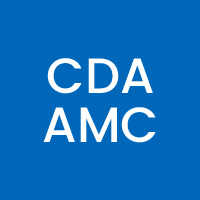Executive Summary:
The Canadian rare disease landscape represents a critical healthcare challenge requiring immediate, comprehensive transformation. This whitepaper synthesizes insights from leading healthcare innovators to provide a strategic roadmap for improving patient experiences and healthcare system efficiency.
Introduction:
In the complex landscape of healthcare, rare diseases represent a profound challenge that demands innovative, compassionate, and strategic solutions. This whitepaper emerges from a critical moment of reflection, illuminating the extraordinary journeys of patients like Jennifer and Anthony, whose stories reveal the urgent need to transform how we approach diagnosis, treatment, and support for those living with rare conditions. By bridging technological innovation, policy reform, and human-centered care, we can reimagine a healthcare ecosystem that recognizes the unique value of every patient’s experience.
1. Current Landscape: The Rare Disease Diagnostic Odyssey
The rare disease diagnostic landscape in Canada represents a complex maze of challenges, characterized by prolonged uncertainty, fragmented care pathways, and significant patient suffering. This section provides a comprehensive examination of the systemic barriers that delay critical diagnoses and treatments.
Key Statistics:
– 1 in 12 Canadians live with a rare disease
– Average diagnostic journey: 5 years
– 40% of patients experience multiple misdiagnoses
– 90% of rare diseases lack approved treatments
Diagnostic Challenges:
– Fragmented healthcare infrastructure
– Limited newborn screening capabilities
– Inconsistent provincial diagnostic protocols
– Lack of integrated data sharing mechanisms
The current diagnostic paradigm is fundamentally misaligned with patient needs, creating unnecessary suffering and economic burden. Immediate, systemic intervention is required to deconstruct existing barriers and create more responsive, patient-centered diagnostic approaches.
2. Technology-Driven Solutions
Emerging technologies offer unprecedented opportunities to revolutionize rare disease diagnosis and management. This section explores cutting-edge AI algorithms, digital health platforms, and innovative screening technologies that promise to dramatically reduce diagnostic timelines and improve patient outcomes.
Emerging Technological Interventions:
a) AI-Powered Diagnostic Algorithms
– CHEO’s “Think Rare” algorithm
– Detect PNH screening tool
– Potential for reducing diagnostic timelines by 60-70%
b) Digital Health Technologies
– Next-generation sequencing
– Electronic medical record integration
– Real-time patient data sharing platforms
Technology is not just a tool but a transformative force capable of reshaping the rare disease care landscape. By embracing AI, digital health, and advanced screening technologies, we can create more precise, efficient, and compassionate diagnostic pathways.
3. Policy and Access Recommendations
Effective rare disease care requires a comprehensive policy framework that transcends traditional healthcare delivery models. This section outlines strategic policy interventions designed to create more flexible, responsive, and patient-centered regulatory environments.
Strategic Policy Frameworks:
– Develop specialized rare disease regulatory pathways
– Create national rare disease screening standards
– Implement accelerated patient access programs
– Expand newborn screening comprehensiveness
Policy innovation must keep pace with technological advancement. By developing specialized regulatory pathways and national screening standards, we can create a more equitable and efficient rare disease care ecosystem
4. Economic Impact Analysis
Beyond the human cost, rare diseases represent a significant economic challenge. This section provides a detailed analysis of the economic implications of current care models and the potential savings achievable through early intervention and innovative approaches.
Cost Considerations:
– Estimated rare disease economic burden: $373 billion CAD
– Potential healthcare system savings through early intervention
– Reduced long-term care and support costs
Investing in rare disease care is not an expense but a strategic economic imperative. By prioritizing early diagnosis and targeted interventions, we can significantly reduce long-term healthcare costs and improve societal productivity.
5. Collaborative Ecosystem Model
Transforming rare disease care requires unprecedented collaboration across diverse stakeholders. This section explores a holistic ecosystem approach that integrates healthcare providers, technology developers, policymakers, and patient advocates.
– Healthcare providers
– Technology developers
– Policy makers
– Patient advocacy groups
– Pharmaceutical innovators
No single entity can solve the rare disease challenge alone. A collaborative, integrated approach that values each stakeholder’s unique perspective is essential to driving meaningful change.
6. Implementation Roadmap
Translating strategic vision into tangible action requires a carefully designed, phased implementation approach. This section provides a comprehensive roadmap for systematically transforming rare disease care over a five-year horizon.
Phased Approach: Phase 1: Technology Integration (0-18 months)
– AI diagnostic tool development
– Data infrastructure enhancement
Phase 2: Policy Alignment (18-36 months)
– Regulatory framework modernization
– Standardized screening protocols
Phase 3: Comprehensive Rare Disease Strategy (36-60 months)
– National rare disease access program
– Comprehensive patient support ecosystem
Strategic transformation is a journey, not a destination. By maintaining flexibility, commitment, and patient-centricity, we can progressively build a more responsive and effective rare disease care system.
7. Patient-Centered Outcomes
Ultimately, the success of any healthcare intervention must be measured by its impact on patient experiences. This section defines comprehensive metrics that capture the multidimensional improvements in patient quality of life.
Measurement Metrics:
– Diagnostic timeline reduction
– Treatment access acceleration
– Quality of life improvements
– Healthcare system efficiency gains
Quantitative metrics must always be balanced with qualitative human experiences. By centering patient narratives and outcomes, we ensure that our innovations truly serve those they are designed to help.
Recommendations:
1. AI and diagnostic technology development
2. Interoperable healthcare data systems
3. Specialized rare disease research programs
4. Policy innovation laboratories
Conclusion:
The transformation of rare disease care in Canada is not just a medical challenge but a profound moral imperative. By embracing technological innovation, collaborative approaches, and unwavering commitment to patient experiences, we can create a healthcare ecosystem that recognizes the extraordinary potential within every patient’s journey.
The time for incremental change has passed; now is the moment for bold, comprehensive reimagination.
Explore More:
https://www.marketaccesscanada.ca/
This whitepaper is based on the 2024 Market Access Summit Session with Karen Heim of Alexion




